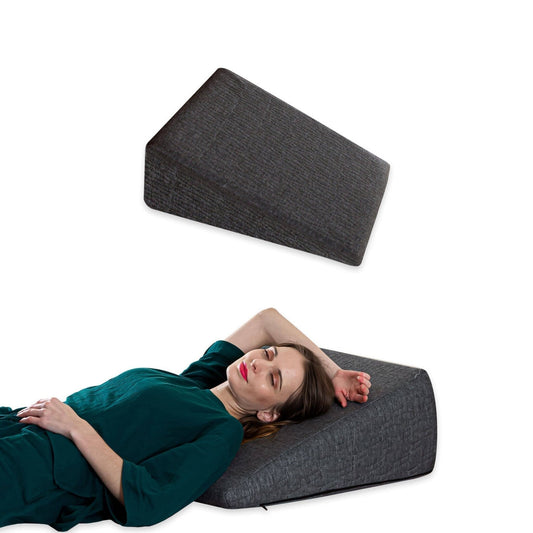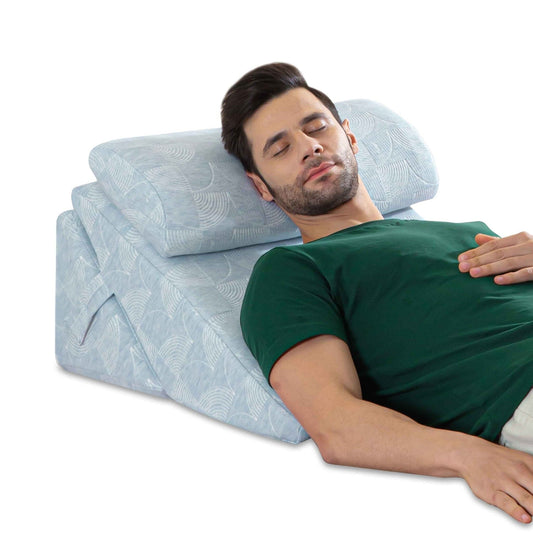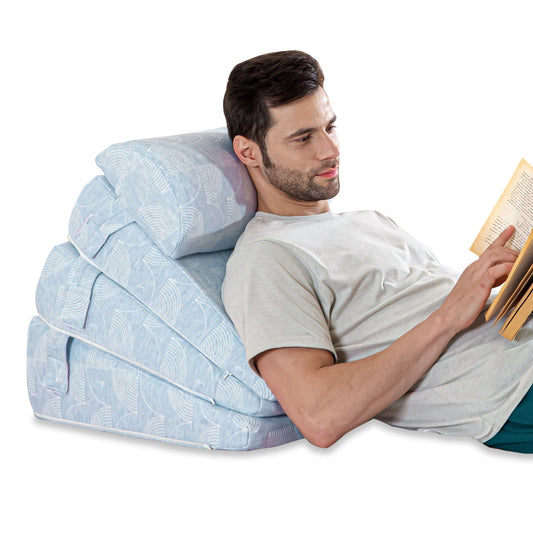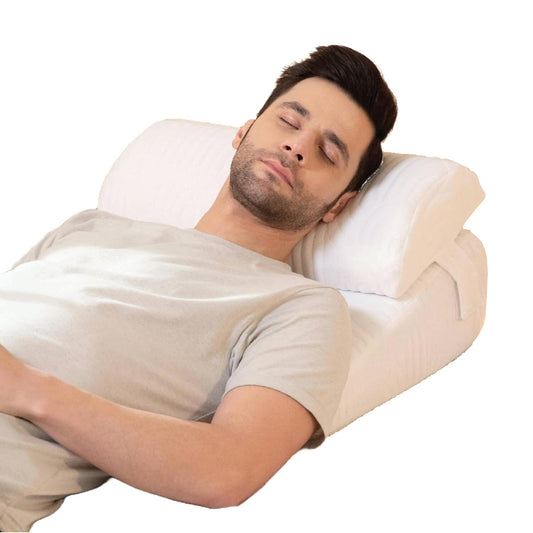Buy Bed Wedge Pillow Collection Online
A supportive pillow can transform how you unwind at home, especially when it’s designed with the right angle and materials. The White Willow wedge pillows focus on aligning the spine, reducing common issues like acid reflux, and giving you a comfortable boost where it matters. Each piece in the wedge cushion lineup is thoughtfully created for individuals who value both health and relaxation in every aspect of their lives.
Why a Wedge Pillow Matters
Acid reflux can disrupt sleep and daily comfort. A bed wedge pillow for acid reflux elevates the upper body in a way that assists with reducing symptoms by keeping the stomach below the esophagus. Many folks also appreciate the gentle slope for easing back tension and breathing more freely at night. The supportive surface works for reading in bed, streaming movies, or even as a stable and soothing platform for your legs while recovering from an injury.
Sustainable Values, Thoughtful Craftsmanship
Conscious sourcing forms the bedrock of every The White Willow product. Premium foams and fabrics are chosen for their durability and minimized environmental impact, without sacrificing the softness and strength you expect. Attention to the environment goes beyond materials, extending into processes that recycle old pillows into rebonded foam. Comfort shouldn’t come at the planet’s expense, and The White Willow balances both priorities under one mission.
Innovation for Modern Living
Crafted in India with German Technology, in Technical Collaboration with BASF adds another layer of innovation to the bed wedge pillow collection. Cutting-edge materials combine with meticulously tested designs, resulting in comfort that fits seamlessly into any bedroom or living room. Each bed wedge pillow or wedge cushion is built to maintain proper alignment and encourage healthy posture. By offering a catalogue of different heights and sizes, it’s easier to find a pillow that pairs perfectly with your personal preferences.
Direct from Our Factory to Your Home
Streamlining the journey from production line to doorstep reduces unnecessary steps and lowers the carbon footprint. Offering a direct route also keeps costs fair, ensuring that quality and affordability go hand in hand. The White Willow believes you deserve a bed wedge pillow or acid reflux pillow that stands up to daily life and delivers lasting relief.
Crafted for Everyday Ease
Many bed wedge pillows end up serving multiple purposes around the house, whether propping you up for a cozy movie night or giving tired feet a gentle lift. A removable cover helps with quick cleaning, so the pillow stays fresh and ready for whatever calls you to relax. The universal design suits most beds, chairs, and sofas, making it simple to change up your relaxation routine.
Trust and Community Impact
Every purchase represents a step toward supporting The White Willow’s outreach efforts. Part of the proceeds goes to empower underprivileged girls through scholarships and personal development programs. Choices such as using eco-friendly processes or cutting out middlemen are rooted in the same philosophy—focusing on people, their well-being, and the environments they call home.
Finding Your Perfect Bed Wedge Pillow
Comfort is personal. Some folks may require the gentle incline of an acid reflux pillow, while others might prefer a taller wedge cushion for reading. Sizes and materials vary, granting a level of customization that fits your unique lifestyle. A consistent, quality-based approach to design ensures each wedge pillow supports your head, your back, and your quiet moments of rest.
- Sustainably sourced foams and fabrics
- Direct approach for fair pricing and reduced carbon footprint
- Partnership with BASF for innovative comfort solutions
- Ethical practices that fund scholarships in underprivileged communities
- Dedicated to delivering unmatched support for every need
Choosing The White Willow bed wedge pillow collection reflects a commitment to rest assured. Every angle is tested and thoughtfully shaped, and every material is chosen for long-term comfort and minimal environmental toll. That careful blend of innovation and responsibility is designed to enhance your favorite corner of the world—wherever that may be.
FAQs
1. How does a wedge pillow help with acid reflux?
A wedge pillow elevates the upper body, keeping the stomach below the esophagus. This position reduces acid reflux symptoms by preventing stomach acid from traveling upward, which can disrupt sleep and cause discomfort.
2. Can I use the wedge pillow for purposes other than sleeping?
Absolutely! The wedge pillow is versatile and can be used for reading in bed, watching TV, or as a support for elevating your legs. It’s also a great tool for easing back tension and improving posture during relaxation.
3. Are the covers removable and washable?
Yes, all The White Willow wedge pillows come with removable covers that are easy to clean. This ensures your pillow stays fresh and ready for everyday use.
4. What materials are used in the wedge pillow, and are they eco-friendly?
The White Willow uses sustainably sourced foams and fabrics to ensure durability and minimal environmental impact. Additionally, the manufacturing process includes recycling old pillows into rebonded foam to further support eco-conscious practices.
5. How do I choose the right wedge pillow for my needs?
TheWhite Willow offers a range of angles, sizes, and materials to suit various preferences and requirements. For acid reflux, a gentle incline is recommended, while taller wedge pillows are ideal for activities like reading or reclining. Consider your specific needs and preferences to find the perfect fit.







